The new app for the Rummelsburg memorial site
This app enables you to investigate the history of the site via personal biographies, video interviews and fascinating before & after images.
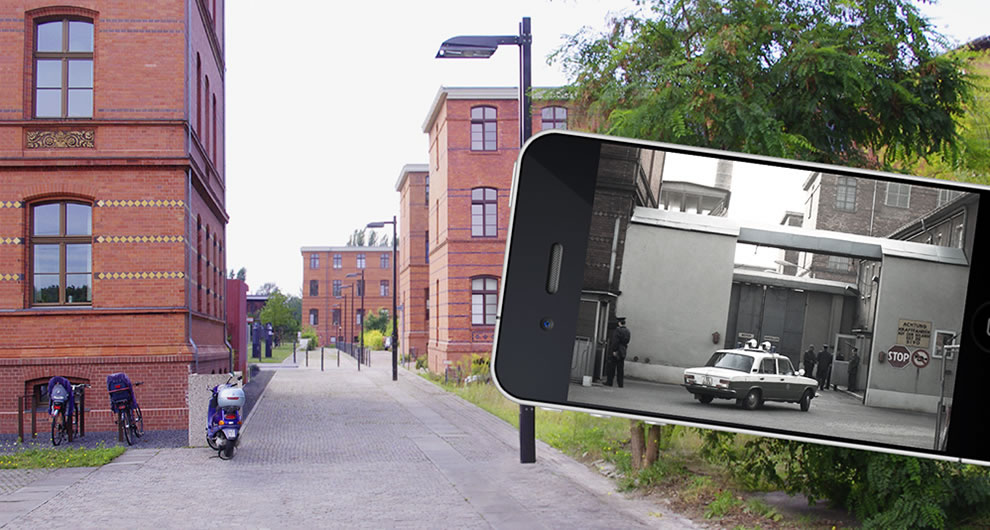
It is based on the original app ”Haftanstalt Rummelsburg” (Rummelsburg Prison) covering the history of the site in the communist East German era.
The app has been expanded to include the period from 1879-1945, and is closely oriented to the content of the exhibition.
QR codes
The QR codes on the pillars allow you to call up further details.

In addition to background texts, historical photo galleries and video interviews, you can also call up audio files accompanying the reading material on the pillars.
Tour
The approx. 40-min. audio guide, featuring picture galleries, descriptions and video interviews, takes visitors through the history of the site from the foundation of the workhouse in 1879 to the Nazi era and finally the closure of the GDR-era prison in 1990.
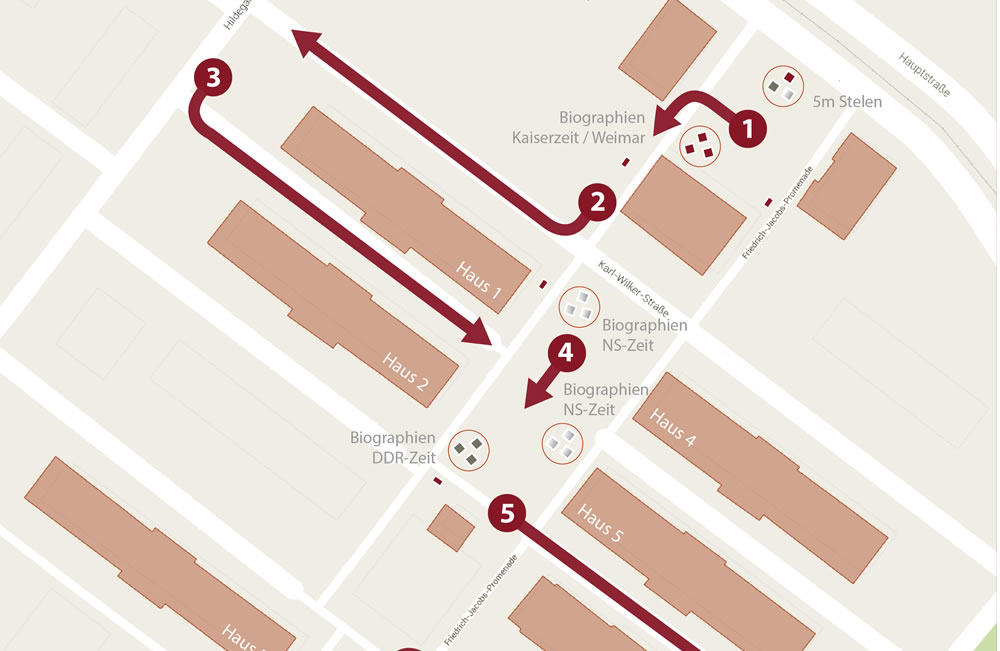
The route of the new tour takes in the locations marked by the pillars. Visitors have the option of calling up detailed information on the personal biographies if they so wish.
Children’s version

An alternative version of the tour is available with content and style geared to the younger generation.
Before & After photos
A new function of the app will be a series of before & after images, which visualise the transformation of this former site of oppression into an attractive residential complex.
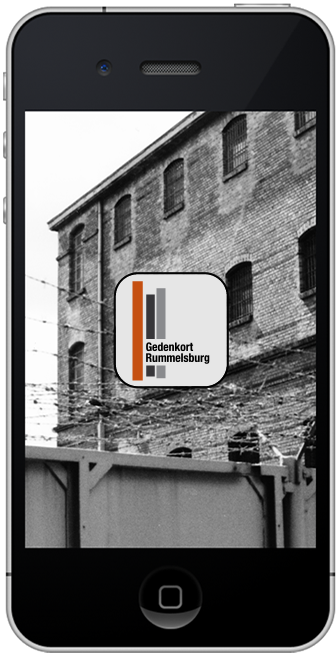
Available now!
The new app is available free of charge for iOS and Android.
If you wish to be informed of updates to the app or other new developments concerning the Rummelsburg memorial site, please add your details to the mailing list.

Information- and Memorial Site
Rummelsburg
Hauptstraße 8, 10317 Berlin.
The permanent exhibition is an open-air museum on the grounds of the former workhouse/prison, and open 24 hours a day.

It covers a period in history from the 1870s through to the fall of the Berlin Wall in 1989. At its heart are 18 biographies of former inmates of the workhouse and prisoners of the GDR-era jail.
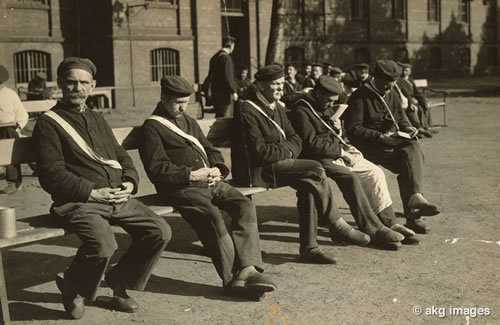
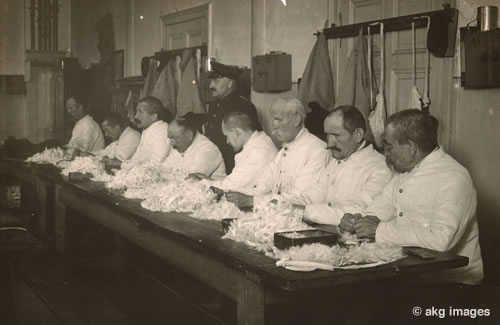

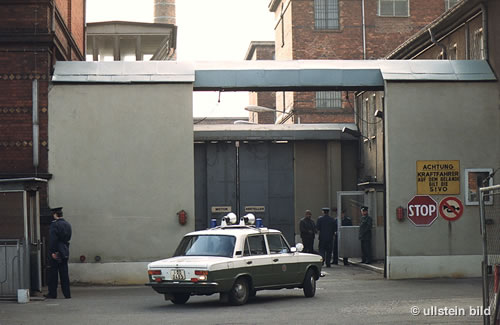
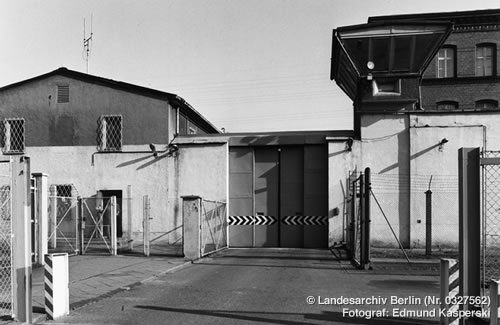
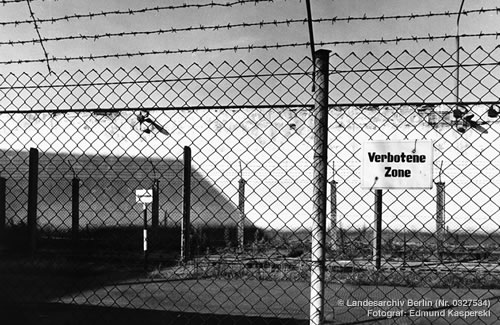
The app enables you to study the history of the complex in even greater detail with the help of biographies, video interviews and fascinating before & after images.
The route of the app tour is based around the exhibition pillars, and enables visitors to study various issues in greater depth. There is now also an extra version geared to the younger generation.
The app is available free of charge for iOS and Android.
The new exhibition also looks at the Nazi era, when Rummelsburg was planned to be the main Berlin detention centre for ”anti-social” individuals.
The word Asoziale (”anti-social”) had already existed as a derogatory term before the Nazis came to power – but it was only then that it became widely used. Such individuals were now subjected to formal persecution.
In 1941 all 30 Jewish inmates were taken away and then murdered.
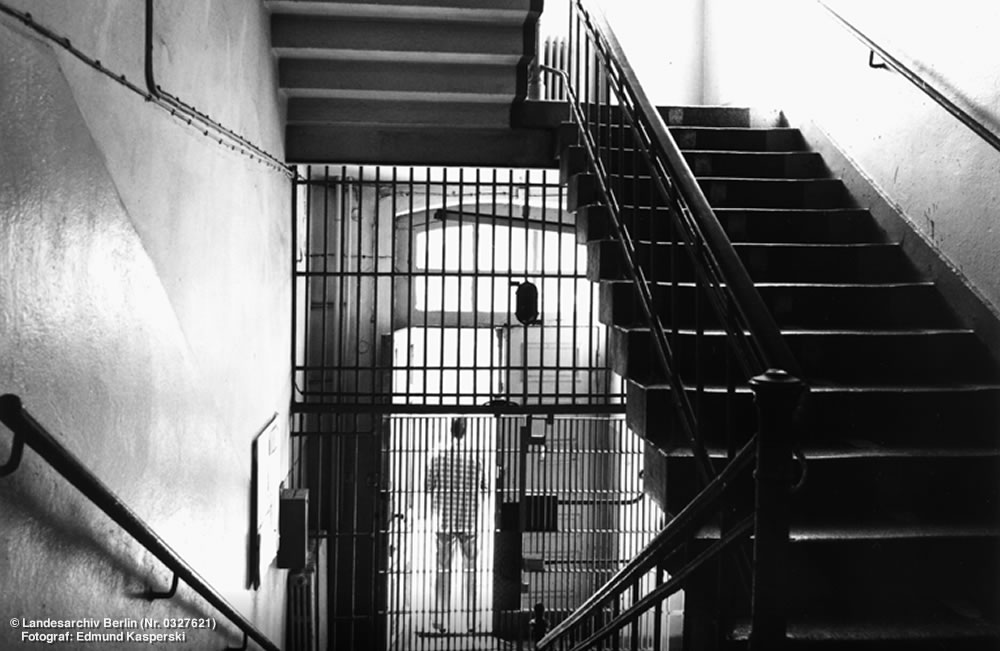
In the communist GDR era the site was home to the central men’s jail of East Berlin. Political prisoners were incarcerated here together with other convicts. ”Anti-social behaviour” was likewise classified as a jailable offence. The authorities intended to make Rummelsburg the country’s main jail for prisoners from non-communist countries.
In 1989 several hundred people were detained here after taking part in protests coinciding with the GDR’s 70th anniversary celebrations on October 7/8.
The Rummelsburg memorial and information centre was officially dedicated on January 12, 2015.
You are most welcome to look around the newly opened open-air permanent exhibition.
Hauptstraße 8 – 10317 Berlin-Lichtenberg
Open area next to the former administrative building, where the three large pillars are located
Further reading
January 12/13 marked the darkest day in the history of the Rummelsburg workhouse.
On January 13, 1941 all 30 Jewish inmates were relocated to a hospital on the outskirts of Berlin as part of what the Nazis euphemistically called a ”euthanasia” program, later abbreviated to ”T4”. Four days later they were transported by bus to the Bernburg psychiatric clinic (in what is now Saxony-Anhalt), where they were gassed. Bernburg had by this point become a killing centre serving the T4 program, which was otherwise aimed at the sick and disabled and saw the murder of around 70,000 people across Germany and Austria through 1941.
On January 12, 1942, i.e. one year later, Rummelsburg was again the focus of a T4 operation. This time a high-ranking commission arrived to conduct a ”survey” of almost all the prison’s 1,500 male and female inmates. This was the first time all ”anti-social” individuals from a correctional facility were recorded for the Nazis’ T4 program.
In 314 cases the examiners decided to have the inmates killed. Unlike a year previously with the Jewish inmates, however, the orders were not carried out. This was because T4 personnel were now given the priority task of exterminating the Jews in Europe.
Reform through forced labour?
The inmates of the workhouse were given a program of non-skilled physical labour in order to be “accustomed to a regular life.”
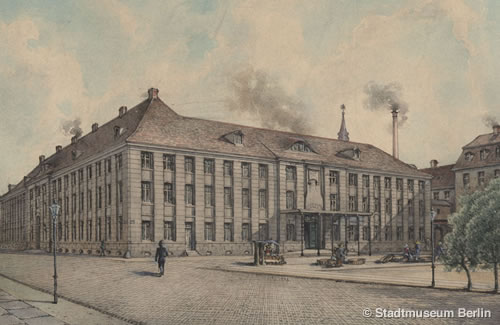
At the end of the 19th century a large number of inmates from the Rummelsburg workhouse were put to work on sewage farms and other municipal facilities outside the city. Their labour constituted the largest source of income for the facility. In 1882 a third of all revenue resulted from work on the municipal sewage farms. The inmates themselves received no payment.
Inmates were also put to work on the workhouse premises themselves, doing low-skilled tasks such as weaving baskets and whips. In the case of female inmate labour, most of the income earned came from sewing and laundering.
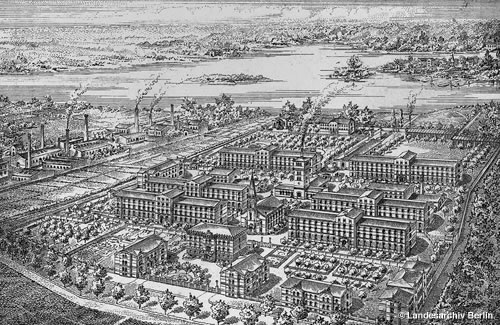
This deployment for public services was part of an overall strategy. A report by the workhouse management from 1896 states that the inmates were to “on principle be used only in the interest of the municipality, without resulting in competition for the day labourers“.
The management saw the workhouse in terms of a “forced labour and reformatory facility.”
What does “anti-social“ mean?
The word Asoziale (“anti-social”) had already existed as a derogatory term before the Nazis came to power – but it was only then that it became widely used. Furthermore such individuals were now subjected to formal persecution. Anyone classed as asozial could end up in a concentration camp.
It was never wholly clear what the term entailed. In April 1938, for example, the Berlin authorities issued a special decree that potentially applied asozial to anyone “who due to a non-temporary condition of physical, mental or moral inadequacy are unable or unwilling to integrate into community life and thus seriously impair or jeopardise the German people, their family or themselves”. It applied in particular to “those who are destitute or in danger of becoming so“.
This imprecise definition essentially gave the authorities wide-ranging powers of access and action. The definition was designed to be applicable to individuals who were under state supervision or were e.g. recipients of welfare payments.
“Anti-social” behaviour in the GDR - Paragraph §249
1968 saw the adoption of the term asozial (“anti-social”) in the penal code of the GDR. Paragraph §249 included three clauses and underwent numerous amendments through 1989.

"§ 249. Gefährdung der öffentlichen Ordnung durch asoziales Verhalten.
(1) Any person who endangers the public order or coexistence of society by evading regular employment due to work-shyness despite being fit to work, or who engages in prostitution or supports themself via improper means, shall be punished with a probationary sentence or detention, corrective labour or a jail term of up to two years. Furthermore, they may be subjected to restrictions on residence and to state supervision and correction”.
Rummelsburg prison also included inmates who had been sentenced under the terms of § 249. As late as the 1980s the proportion of male prisoners exceeded 10%; that of female inmates at the branch prison for women in Grünau even exceeded 50%.
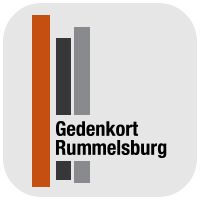
Imprint
Website and App
Funded by 'Senatskanzlei – Kulturelle Angelegenheiten' with support of 'Mauerfonds der Bundesregierung' and 'Bezirk Lichtenberg von Berlin'. This app is an extension of the project 'Haftanstalt Rummelsburg', funded by Stiftung Aufarbeitung.
Project management: Rainer E. Klemke
Curator and author: Thomas Irmer
Design and programming:
dotcombinat, Schreinerstr. 59, 10247 Berlin
Oliver Brentzel, Klaus König
info@dotcombinat.de
dotcombinat.de
Translations: Francis C. Lee
Images:
akg images | ullstein bild | Landesarchiv Berlin
Permanent exhibition of the round table for a Rummelsburg memorial site commissioned by the Lichtenberg district parliament and district administration, represented by the mayor of Lichtenberg, Andreas Geisel.
Funded by 'Senatskanzlei – Kulturelle Angelegenheiten' with support of 'Mauerfonds der Bundesregierung' and 'Bezirk Lichtenberg von Berlin'.
Projekt management: Rainer E. Klemke
Conception and Design: Helga Lieser with Peter Francis Lewis and Jens Henningsen
Exhibition construction and assembly: Fa. Kreativ Metall Bau
Print and assembly: Fa. Heerlein Werbetechnik
Image editing: Edgar Lieser
Our thanks to: BSTU, Landesarchiv Berlin, Stadtmuseum Berlin, Archiv der Robert-Havemann-Gesellschaft, Bundesarchiv, Hessisches Hauptstaatsarchiv, Ullstein Bild and AKGimages.
We also thank: Hannelore Dege, Christoph Hamann, Annette Hinz-Wessels
Our special thanks to the former prisoners.
© Berlin 2015Provider
Runder Tisch für einen Gedenkort Rummelburg
c/o dotcombinat GbR
Klaus König / Oliver Brentzel
Schreinerstr. 59, 10247 Berlin, Germany
info@dotcombinat.de
Access to camera
We need access to the camera of your device. No data will be collected or stored by us. Access is only to allow you to read QR codes.



